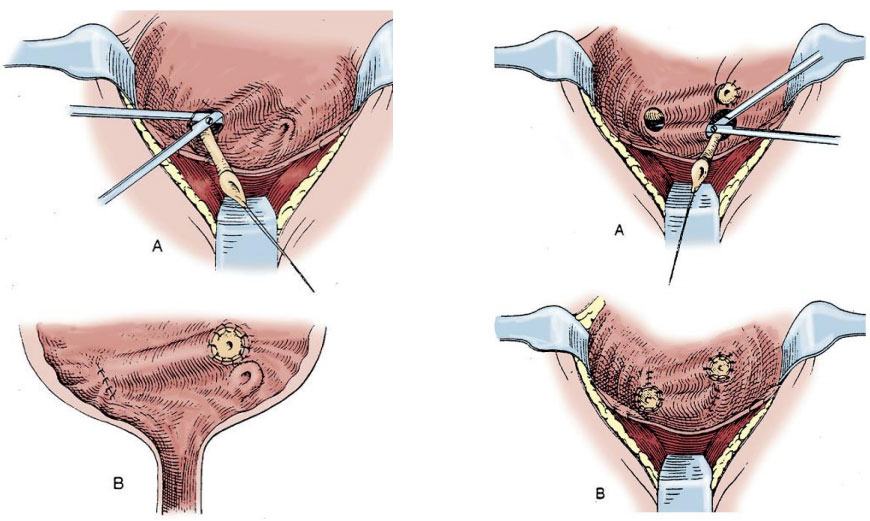

Ureteric Reimplantation, also known as ureteral reimplantation or ureteroneocystostomy, is a surgical procedure used to reposition or reattach the ureter (the tube that carries urine from the kidney to the bladder) into the bladder. This procedure is performed to correct conditions where the ureter is malpositioned, obstructed, or damaged, ensuring that urine flows smoothly from the kidney to the bladder.
Indications for Ureteric Reimplantation
- Vesicoureteral Reflux (VUR): Abnormal backward flow of urine from the bladder to the ureters and kidneys, often seen in children.
- Ureteric Obstruction: Blockage due to ureteropelvic junction (UPJ) obstruction or scarring.
- Ureteral Injury: Trauma or accidental damage during pelvic surgery.
- Ureteric Stricture: Narrowing of the ureter, leading to obstruction.
- Ectopic Ureter:Abnormally placed ureter draining outside the bladder.
How is Ureteric Reimplantation Performed?
- Preoperative Evaluation:Blood and urine tests to rule out infection and evaluate kidney function.
- Anesthesia: Performed under general anesthesia.
Benefits of Ureteric Reimplantation
- Prevents Vesicoureteral Reflux (VUR): Reduces the risk of kidney infections and long-term damage.
- Restores Normal Urine Flow: Corrects obstruction and improves kidney function.
- Minimally Invasive Options Available: Faster recovery with laparoscopic and robotic techniques.
- Improves Quality of Life: Reduces recurrent UTIs and related complications.
Ureteric Reimplantation is a highly effective surgical procedure to correct ureteral abnormalities, ensuring proper urinary drainage and preventing recurrent infections or kidney damage. With advanced laparoscopic and robotic approaches, the procedure offers quicker recovery, less discomfort, and improved post-operative outcomes.